Your Calls
Which two of today’s featured images do you like best? Why?
Of Images #3 and #4, which one is the stronger image. Why?
Picking My Keepers from a 5851 Sony a9 iii Image Folder
I did not want to fall in love with the Sony a9 iii. I had hoped that the relatively small flle size would be a deal breaker. Reality, however, got in the way. For photographing birds in flight and in action, it is, with its maximum frame rate of 120 frames per second, beyond compare. Not to mention the Bird Face/Eye autofocus is significantly better than with the Sony a1. Sit beside me as I go through 5581 images in less than 30 minutes. And if I had not been yakking when I created the video, I would have gotten the job done in less than twenty minutes. I wound up keeping 121 images after the first edit. Along the way, you will get a glimpse of what makes the best wing and head positions. And this might sound funny, but it was not a great day at Sitck Marsh.
Below are five of my favorites.
Note:Many folks feel that 120 fps is too much, that it would not be possible to pick your keepers from so many images. Using Photo Mechanic, I have found that doing so is actually easy; I go so fast that the good ones literally jump off the screen. Watch the video to see how it is done. Remember that I tag the keepers with a “T” and then select all the Untagged images and delete them all. As seen near the end of the video.
What’s Up?
I enjoyed decent morning and afternoon photo sessions on Sunday. The latter a rarity here at ILE.
Today is Monday 8 April, 2024. I fly to Bismarck, ND to photograph with BPN friend Kevin Hice for two weeks. Though I have not put a single thing in either of my checked bags, I will be heading down to the lake for a short morning session as soon as I hit “Publish.” Whatever you are doing, I hope that you also have a great day. Be sure to watch the Sony a9 iii Bird-Face/Eye Detection Autofocus video that opens this post.
Don’t look now but this blog post makes nine days in a row with a new educational post just for you.
If you plan on purchasing a Sony a9 III Mirrorless Camera (or anything else for that matter), please remember to use or write for either my Bedfords discount code or my B&H affiliate link. Folks who use one of my two affiliate links to purchase the a9 III will receive my .DAT settings (the complete camera set-up) along with a Buttons and Dials Guide.
Please remember to use the B&H links that are found on most blog pages and to use the BIRDSASART discount code at checkout when purchasing your new gear from Bedfords to get 3% back on your credit card and enjoy free second-day air FedEx. Please, also, consider joining a BAA IPT. You will be amazed at how much you will learn!
If an item — a Delkin flash card, or a tripod head — for example, that is available from B&H and/or Bedfords, is also available in the BAA Online Store, it would be great, and greatly appreciated, if you would opt to purchase from us. We will match any price. Please remember also to use my B&H affiliate links or to earn 3% cash back at Bedfords by using the BIRDSASART discount code at checkout for your major gear purchases. Doing either often earns you free guides and/or discounts. And always earns my great appreciation.


|
|
|
For those who did not use my link to purchase their Sony 300mm f/2.8 GM lens, you can order your a copy here for $209.93. Click on the image to enlarge and to be able to read the fine print. |
The BAA Sony 300mm f/2.8 Lens Guide
Impressed by my Sony FE 300mm f/2.8 GM OSS Lens (Sony E) images from the last three posts? Use either my Bedfords or B&H affiliate link to purchase your Sony 300mm f/2.8 GM lens and shoot me your receipt via e-mail and request a copy of the first-ever BAA Lens Guide. I thought that it would take only minutes to create this guide, but I was dead wrong. In the process of creating it, I learned a ton about the lens. And even better, I discovered a simple yet potentially fatal flaw that was resulting in sporadically unsharp flight images. The set-up fix is simple. Just be sure to use one of my affiliate links and get the guide for free.
If not, you can purchase a copy here for $209.93. Yes, it never hurts to use my links and it never costs you one penny more. And if you contact me via e-mail before you make a major purchase, I can often save you some money.
|
|
|
This image was created on 2 April 2024 at Stick Marsh, Fellsmere, FL. Crouching a bit as I was shooting down at the bird, I used the handheld Sony FE 300mm f/2.8 GM OSS Lens (Sony E) with the Sony FE 2x Teleconverter and the ridiculously amazing Sony a9 III Mirrorless Camera. The exposure was determined via Zebra technology with ISO on the Thumb Dial. ISO 1000: 1/2000 sec. at f/5.6 (wide open) in Manual mode. When evaluated in RawDigger, the raw file brightness was determined to be dead solid perfect. AWB at 8:04:28am on a then sunny morning. Tracking: Zone/AF-C with Bird Face/Eye detection enabled performed to perfection. Be sure to click on the image to enjoy the larger, sharper high-res version. Image #1: Roseate Spoonbill head portrait |
A Sucker for Crimson and Powder Blue
I’ve long been in love with images that feature crimson set against a powder blue background. Using the Lumincance Targeted Adjustment Tool (L-TAT) during the raw conversion enable me to get the BLUE perfect. Instructions for using this great new Photoshop tool are a bit part of the Digital Basics III Series.
Bored, I walked away from the traditional airboat ramp spot to go exploring. This one was made just past the parking lot bathroom after stalking the bird carefully. A fisherman casting just a few feet away helped to relax the bird (if that makes sense).
|
|
|
This image was created on 2 April 2024 at Stick Marsh, Fellsmere, FL. Standing at full height, I used the handheld Sony FE 300mm f/2.8 GM OSS Lens (Sony E) with the Sony FE 2x Teleconverter and the ridiculously amazing Sony a9 III Mirrorless Camera. The exposure was determined via Zebra technology with ISO on the Thumb Dial. ISO 1600: 1/1000 sec. at f/5.6 (wide open) in Manual mode. When evaluated in RawDigger, the raw file brightness was determined to be dead solid perfect. AWB at 8:07:28am on a then sunny morning. Tracking: Expand Spot/AF-C with Bird Face/Eye detection enabled performed to perfection. Be sure to click on the image to enjoy the larger, sharper high-res version. Image #2: Fish Crow Calling |
Photograph Me!
Apparently upset that I was concentrating on the spoonbills, this Fish Crow was calling incessantly. After a few minutes, I added a ton of light to the exposure and gave in. I wish that I had pointed the camera down just a bit so that the square crop would have been more pleasing.
|
|
|
This image was also created on 2 April 2024 at Stick Marsh, Fellsmere, FL. Standing at full height, I used the handheld Sony FE 300mm f/2.8 GM OSS Lens (Sony E) with the Sony FE 1.4x Teleconverter and the ridiculously amazing Sony a9 III Mirrorless Camera. The exposure was determined via Zebra technology with ISO on the Thumb Dial. ISO 1600: 1/2500 sec. at f/4 (wide open) in Manual mode. When evaluated in RawDigger, the raw file brightness was determined to be perfect. AWB at 8:20:04am on a then cloudy morning. Zone/AF-C with Bird Face/Eye detection enabled performed perfectly. Be sure to click on the image to enjoy a high-res version. Image #3: Roseate Spoonbill turning in flight and struggling with a long string of nesting material. |
Same Old, Same Old
With a south wind, the airboat ramp spot is not as good as it is when the wind has an easterly component. The clouds were hugely important — if it had been sunny, creating Images 3, 4, and 5 would not have been possible as they would have been glaringly sidelit. As always, understanding the relationship between the wind direction and sky conditions made the best place to be quite obvious. Join an IPT to learn more.
|
|
|
This image was also created on 2 April 2024 at Stick Marsh, Fellsmere, FL. Standing at full height, I used the handheld Sony FE 300mm f/2.8 GM OSS Lens (Sony E) with the Sony FE 1.4x Teleconverter and the ridiculously amazing Sony a9 III Mirrorless Camera. The exposure was determined via Zebra technology with ISO on the Thumb Dial. ISO 1600: 1/2500 sec. at f/4 (wide open) in Manual mode. When evaluated in RawDigger, the raw file brightness was determined to be perfect. AWB at 8:20:04am on a then cloudy morning. Zone/AF-C with Bird Face/Eye detection enabled performed perfectly. Be sure to click on the image to enjoy a high-res version. Image #4: Roseate Spoonbill turning in flight and struggling with a long string of nesting material. |
a9 iii Speed
It is very simple. When you are using the Sony a9 iii at 120 fps you will get four times as many poses and wing positions as when you are using a 30 fps camera body. The speed is addictive.
|
|
|
This image was also created on 2 April 2024 at Stick Marsh, Fellsmere, FL. Standing at full height, I used the handheld Sony FE 300mm f/2.8 GM OSS Lens (Sony E) with the Sony FE 1.4x Teleconverter and the ridiculously amazing Sony a9 III Mirrorless Camera. The exposure was determined via Zebra technology with ISO on the Thumb Dial. ISO 1600: 1/2500 sec. at f/4 (wide open) in Manual mode. When evaluated in RawDigger, the raw file brightness was determined to be perfect. AWB at 8:27:45am on a then cloudy morning. Zone/AF-C with Bird Face/Eye detection enabled performed perfectly. Be sure to click on the image to enjoy a high-res version. Roseate Spoonbill turning in flight and struggle with a long string of nesting material. |
Light Always Has a Direction
It is important to understand that even when it is cloudy or heavily overcast, light is directional. As I was facing and shooting to the southwest and the birds were flying toward me, the left sides of the bird’s faces in Images 3, 4, and 5 were somewhat shaded. I did extensive work in on the bird’s heads first lightening the shadowed side and increasing the saturation.
Typos
With all blog posts, feel free to e-mail or to leave a comment regarding any typos or errors.

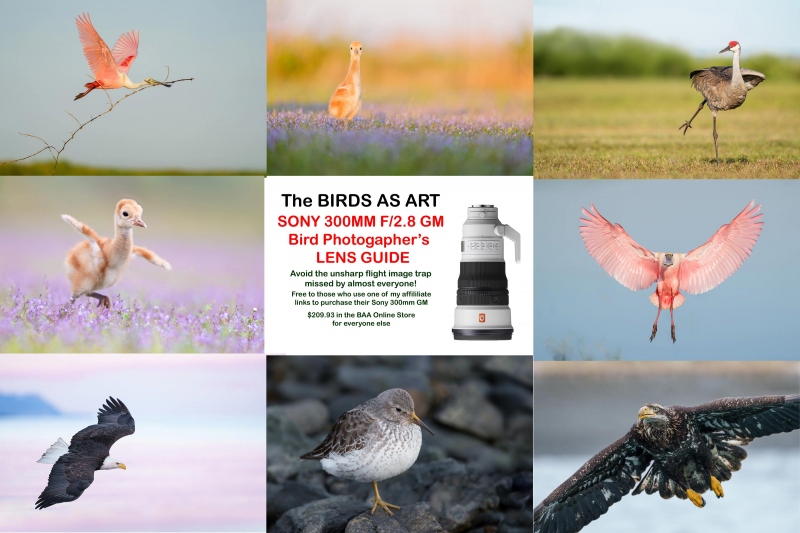
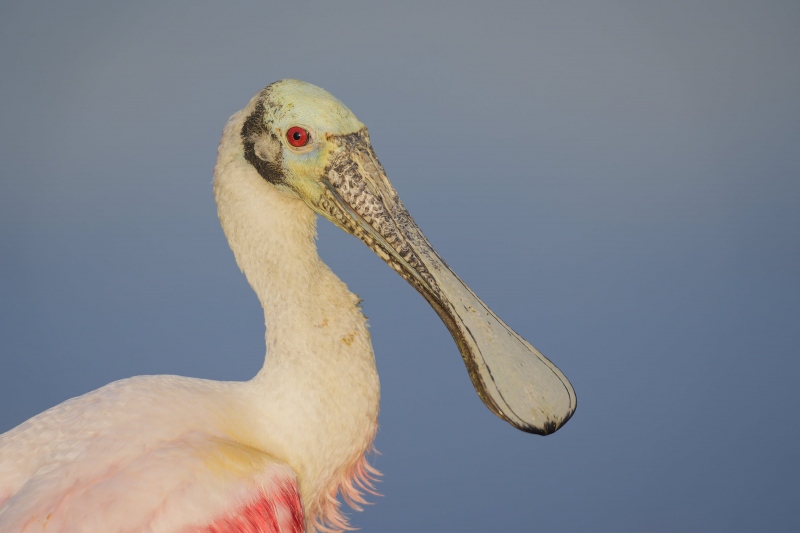
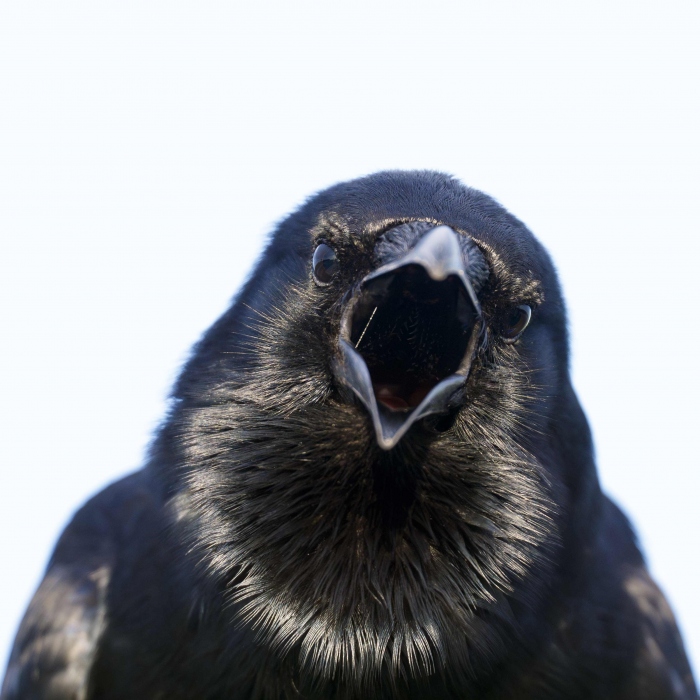
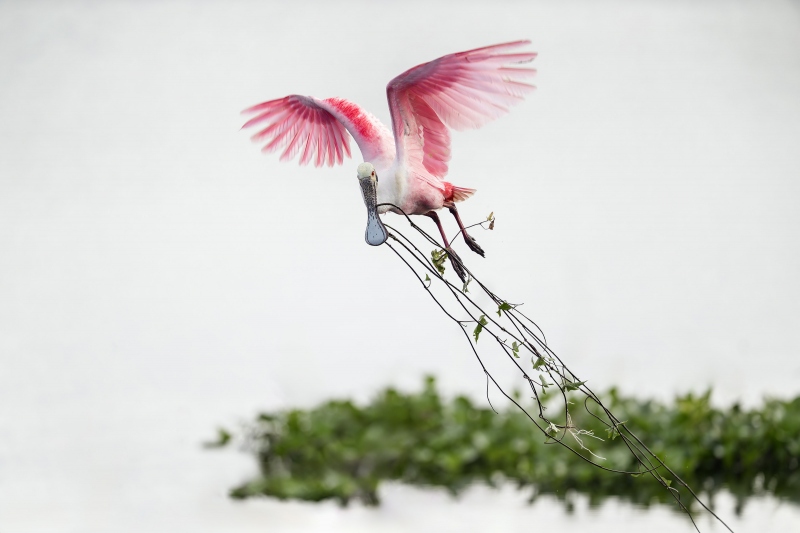
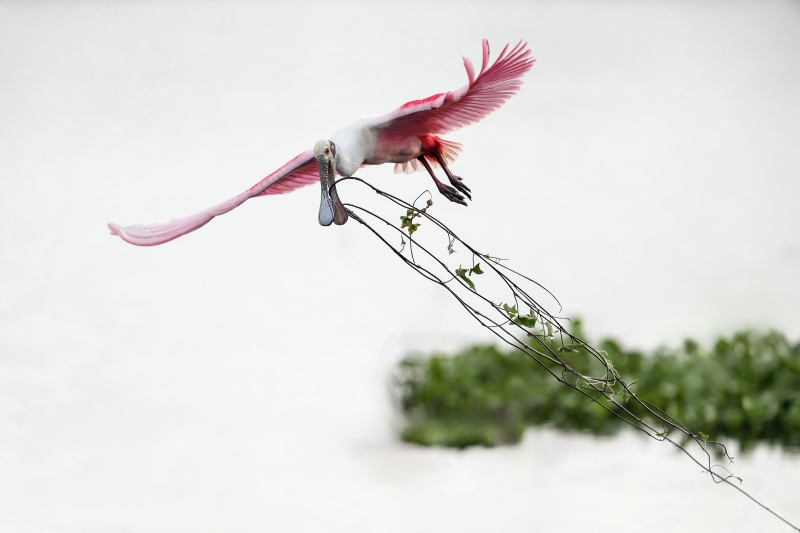
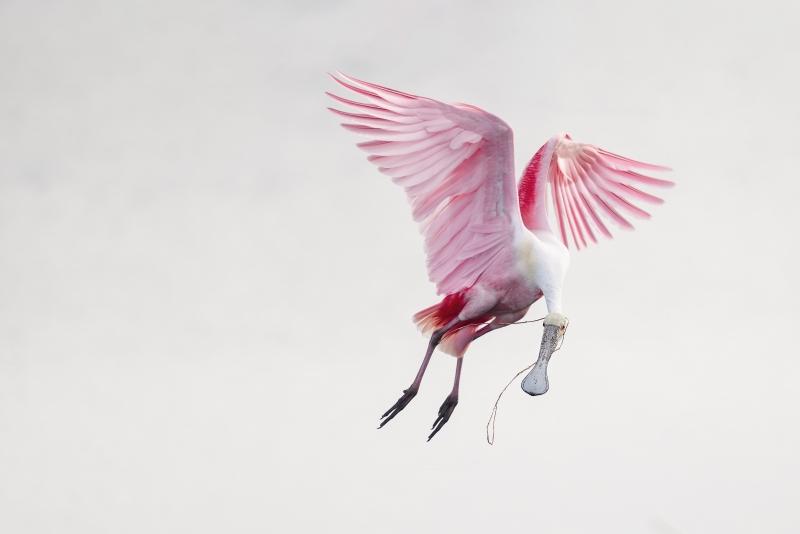













Fantastic video for a variety of reasons. It demonstrated your assertion of faster is better. Suddenly, 120 FPS is a must have, making 20-30 fps positively archaic. Importantly, it also illustrated an efficient and productive first pass culling process, yielding plenty of images worthy of further study. Ironically, the aspect that I found most interesting was your blooper admissions; crowding the frame, cutting off the virtual feet, and the oof sequences. Not only were they humanizing, they will inevitably inspire the legions of photographers with infinitely less experience who are always striving to improve. Kudos!
Thanks, Adam. I am glad that you found the video helpful and educational. Noting my framing errors was more factual than admission 🙂
with love, artie
PS: It does solidify one of my main premises: stronger, experienced, (usually younger) flight photographers with fast reflexes and superior fine motor skills will get consistently better results than older, weaker, slower like me. They are in better position to utilize the amazing new technologies than us grandpas.